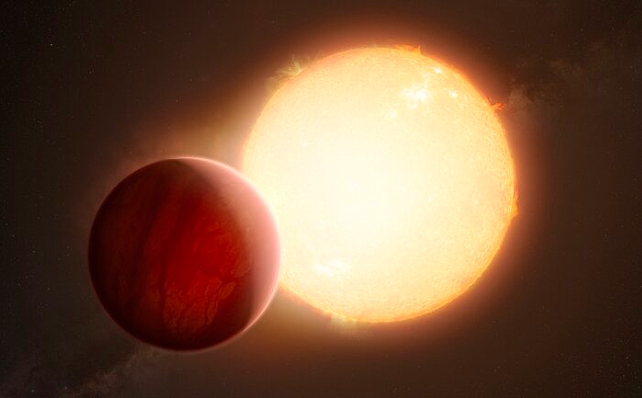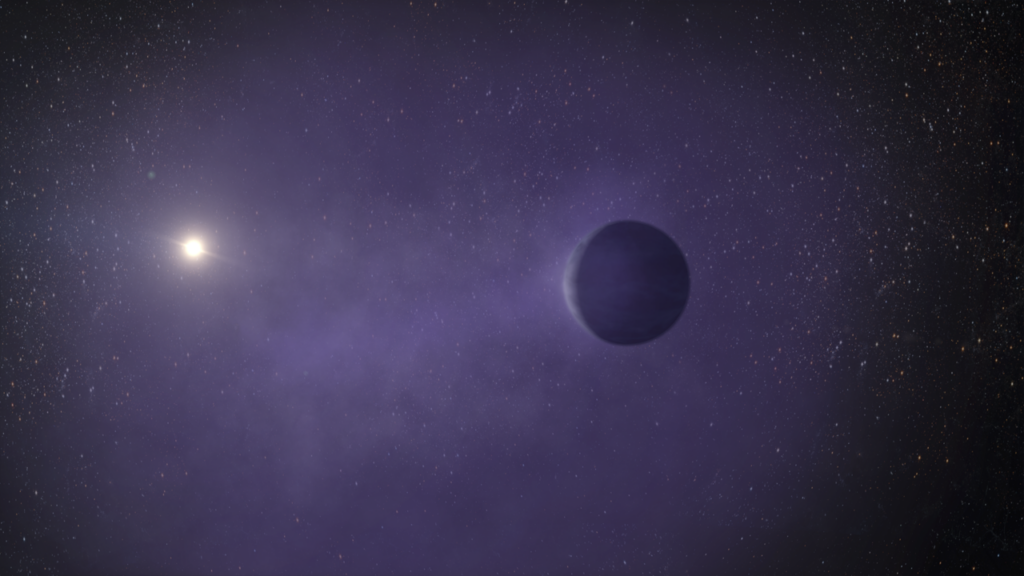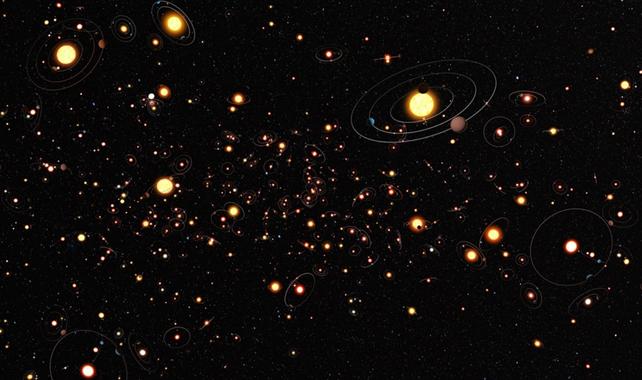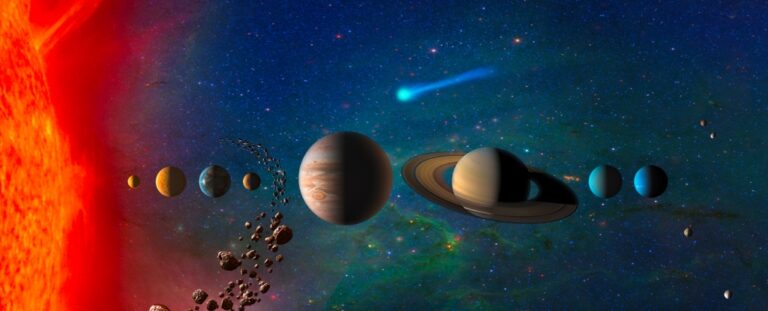Is Our Solar System a Singular Anomaly in the Cosmos, Unlike Anything Else Found?
Ever since the groundbreaking discovery in 1992 of two planets circling a star beyond our own Solar System, a multitude of new celestial bodies have been added to the ever-expanding collection of ‘exoplanets’ in the Milky Way galaxy.
This vast array of alien worlds orbiting foreign stars has provided us with valuable insights. However, one particular aspect stands out prominently. We have yet to encounter anything resembling our own Solar System.
This observation has led some to speculate that our Sun and its planetary family may be unique in some manner, possibly the sole example of its kind.
Consequently, this could imply that life itself is an anomaly, and that the circumstances that gave rise to Earth and its intricate web of self-replicating chemistry are exceptionally rare.
When considering the sheer numbers, the prospects appear bleak. The majority of exoplanets discovered thus far belong to a category that is not conducive to supporting life: massive giants and subgiants composed primarily of gas, and possibly ice.
Furthermore, most of these exoplanets orbit their host stars in extremely close proximity, almost embracing them. As a result, their scorching temperatures far exceed the known habitable range.

It is conceivable that as our search progresses, the data will eventually even out and we will come across more locations that resemble our familiar surroundings. However, the matter at hand is far more intricate than a mere examination of figures. The field of exoplanet science is constrained by the limitations of our technological advancements. Furthermore, our perception of the actual diversity of extraterrestrial worlds is at risk of being confined by our own imaginative boundaries. The reality of what truly exists in the Milky Way galaxy and beyond may diverge significantly from our current observations.
Expectations, and how to thwart them
Exoplanet science has a long history of defying expectations, right from its inception. According to planetary scientist Jonti Horner of the University of Southern Queensland, in 2022, the understanding of planetary systems was limited to just one system during his childhood.
The prevailing assumption was that all planetary systems would resemble this one, with small rocky planets close to the star and large gas giants farther away. This belief persisted for some time, making it challenging for scientists to identify exoplanets orbiting main sequence stars like our Sun. They expected to observe the tell-tale signs of massive planets exerting gravitational forces on their stars, similar to our own gas giants’ orbital patterns, which take years to complete.
Due to the need for extended observation periods to make a single measurement, it seemed impractical to sift through a relatively short history of observations for numerous stars to definitively identify another main-sequence solar system.
However, when scientists finally conducted a thorough search, they discovered an exoplanet that defied their expectations. This gas giant, half the mass of Jupiter but twice its size, orbited its host star at an incredibly close distance, completing a year in just 4.2 days. Its atmosphere scorched at temperatures reaching around 1,000 degrees Celsius (1800 degrees Fahrenheit).
Since then, researchers have come to realize that these “Hot Jupiter” type planets are not anomalies but rather relatively common occurrences. It is now understood that there is much more diversity in the galaxy than what we observe in our own solar system. However, it is crucial not to assume that our current detection capabilities encompass all that the Milky Way has to offer. If there are planetary systems similar to our own, they may very well be beyond our technological reach at present.
“Finding systems like the Solar System is a significant challenge for us, as they currently surpass our technological capabilities,” explains Horner.
How to find a planet
Let’s make it abundantly clear: the techniques employed to identify exoplanets are remarkably ingenious. Presently, there exist two methods that serve as the backbone of the exoplanet detection arsenal: the transit method and the radial velocity method.
In both instances, a telescope with an exceptional sensitivity to even the slightest fluctuations in a star’s light is indispensable. However, the specific signals sought after by each method couldn’t be more dissimilar.
To employ the transit method, a telescope is required to maintain a fixed gaze on a star for an extended duration. This is precisely why instruments like NASA’s space-based Transiting Exoplanet Survey Satellite (TESS) hold such immense power, as they possess the capability to continuously observe a designated portion of the celestial sphere for over 27 days, undisturbed by the Earth’s rotation.
Invading astronomy one exoplanet gif at a time! This time with a gif showing the transit method for detecting exoplanets
pic.twitter.com/2ZHv24DRTH
— Dr. Alysa Orbits (Obertas) (@AstroAlysa) September 1, 2021
The objective of these types of telescopes is to detect the occurrence of a transit, which happens when an exoplanet moves in front of its host star, causing a temporary decrease in the star’s brightness, similar to a small cloud blocking out a few rays of sunlight.
These decreases in light intensity are extremely small, as you can imagine. It is not enough to observe just one dip in brightness to confidently conclude the presence of an exoplanet. There are various factors that can cause a star’s light to dim, many of which are isolated incidents. Multiple transits, particularly those that display regular and predictable patterns, are considered the most reliable evidence.
As a result, the data tends to favor larger exoplanets that have shorter orbital periods and are located closer to their host stars than Mercury is to the Sun. Some of these exoplanets are even much closer, with orbits lasting less than one Earth week.
In case you missed it, my gif showing how exoplanets are detected via the radial velocity method is now available in dark mode! pic.twitter.com/P4yvXQVSUt
— Dr. Alysa Orbits (Obertas) (@AstroAlysa) August 15, 2022
The radial velocity technique is used to detect the movement of a star caused by the gravitational force of an exoplanet as it revolves around it. Rather than a star and its planets simply orbiting each other, they engage in a synchronized dance. Both the star and the planets revolve around a central point of gravity known as the barycenter.
In the case of our Solar System, this barycenter is located very close to the surface of the Sun, or just outside it. This is primarily due to the significant influence of Jupiter, which has a mass more than twice that of all the other planets combined.
Unlike the brief and easily missed event of a transit, the shift in the star’s position is a continuous change that can be detected without constant monitoring. We are able to observe the motion of distant stars as they orbit their barycenters because this motion alters their light through a phenomenon called the Doppler effect.
When the star moves towards us, the waves of light it emits are compressed slightly, shifting towards the blue end of the spectrum. Conversely, as the star moves away, the waves stretch towards the red end. A regular oscillation in the star’s light indicates the presence of an orbiting companion.
Furthermore, the data tends to support the existence of larger planets that exert a stronger gravitational influence and have shorter, closer orbits around their star.
Apart from these two prominent methods, there are rare instances where we can directly capture images of exoplanets as they orbit their star. Although this is an extremely challenging task, it may become more feasible during the era of the James Webb Space Telescope (JWST).
According to astronomer Daniel Bayliss from the University of Warwick in the UK, this approach would reveal a different class of exoplanets compared to those with short orbits.
To observe an exoplanet without being overwhelmed by the brightness of its host star, it is crucial for the two entities to be significantly distanced from each other. Consequently, the direct imaging technique is more inclined towards detecting planets with longer orbital periods.
Nonetheless, it is evident that larger exoplanets would be more readily identified using this approach due to their size.
Bayliss elucidated that each method of discovery possesses its own inherent biases.
Furthermore, Earth’s orbit around the Sun, which spans a year, falls between the orbital ranges preferred by various detection methods. As a result, locating planets with a one-year orbit remains an exceedingly challenging task.
What’s out there?
The class of exoplanets known as mini-Neptunes is the largest group in terms of numbers, and interestingly, it is not found within our own Solar System. These exoplanets are characterized by their gas envelopes and are smaller than Neptune yet larger than Earth in size.

Most of the confirmed exoplanets have orbits that are much shorter than Earth’s, with over half of them having orbits of less than 20 days. These exoplanets primarily orbit solitary stars, similar to our Sun, while less than 10 percent are found in multi-star systems. However, it is interesting to consider whether exoplanets are more prevalent around single stars or if they are simply more challenging to detect in multi-star systems.
The presence of multiple sources of light in multi-star systems can potentially distort or obscure the signals we are trying to detect from exoplanets, which are already much smaller in comparison. On the other hand, it is also possible that the complexity of planet formation is increased in such systems.
This brings us back to our own Solar System. Despite the peculiarities we have discovered in other systems, it is plausible that our home is not as unique as it may seem.
According to Bayliss, “It is reasonable to conclude that there are actually some very common types of planets that are absent from our Solar System. For instance, we do not have any Super Earths, which are similar to Earth but with double the radius. We also lack mini-Neptunes. Therefore, it is fair to say that there are some very common planets that we do not observe within our own Solar System.”
Now, I don’t believe I would go as far as to say that our Solar System is rare or not. It is possible that there are numerous other stars out there with a similar arrangement of planets like our Solar System, but we have yet to observe them.

On the brink of discovery
The initial discovery of exoplanets occurred a mere 32 years ago, when they were found orbiting a pulsar, a star that differs greatly from our own. Since then, there have been remarkable advancements in technology. With a better understanding of what to search for, scientists can now develop increasingly effective methods to locate exoplanets around a wider range of stars.
As technology continues to progress, our capacity to discover smaller and smaller worlds will also improve. Consequently, the field of exoplanet science may be on the verge of uncovering thousands of hidden worlds that are currently beyond our perception. This is due to the fact that in astronomy, there is a greater abundance of small celestial objects compared to larger ones, as highlighted by Horner.
An excellent illustration of this is red dwarf stars, which are the most prevalent type of star in the Milky Way. Despite their diminutive size, measuring up to approximately half the mass of the Sun, they are so faint that they cannot be observed with the naked eye. Nonetheless, red dwarf stars constitute up to 75 percent of all stars in our galaxy.
Presently, our understanding of exoplanets is limited due to the fact that there are certain types of worlds that remain invisible to us. However, this situation is bound to change. Horner expresses a sense of skepticism towards the prevailing notion that mini-Neptunes are the most common type of planets, suggesting that in 20 years’ time, such statements may be viewed with the same skepticism as the early 1990s claims that rocky planets only exist in close proximity to their stars.
Perhaps my assumptions could be proven incorrect. This is the nature of scientific inquiry. However, I believe that as our capabilities advance to the point where we can detect objects the size of Earth and smaller, we will likely uncover a greater number of Earth-sized and smaller objects compared to those that are Neptune-sized. Consequently, it is possible that our unique and peculiar planetary system may not be as solitary in the vast cosmos as we once thought.
This article is republished from ScienceAlert under a Creative Commons license. Read the original article.
Do not forget to share your opinion with us to provide you with the best posts !




0 Comments